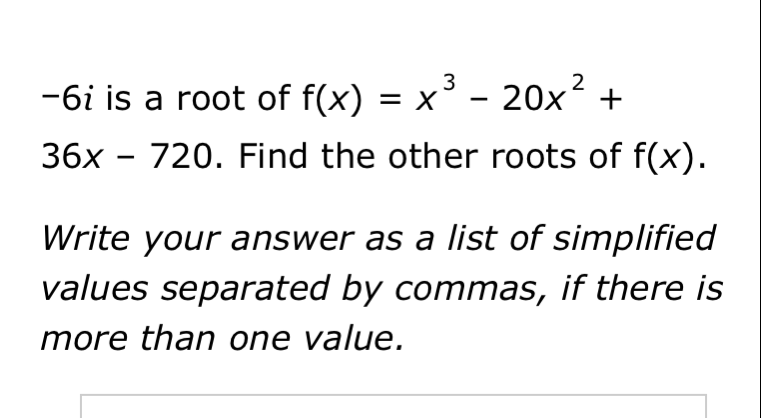Full solution
Q. is a root of . Find the other roots of .Write your answer as a list of simplified values separated by commas, if there is more than one value.
- Determine total number of roots: The number of roots is equal to the degree of the polynomial. We have:Determine the total number of roots. The degree of is . So, the number of roots: .
- Find conjugate of : If is a root, then its conjugate is also a root of . Given root: Find the conjugate of . The conjugate is . Since complex roots come in conjugate pairs for polynomials with real coefficients, is also a root of .
- Divide by : Now we have two roots: and . We need to find the third root.Since the polynomial is cubic, we can use synthetic division or polynomial division to divide the polynomial by .Divide by to find the quotient polynomial, which will be of degree .
- Perform division: Perform the division:This division should give us a linear polynomial since we are dividing a cubic polynomial by a quadratic polynomial.
- Division result: The division yields: . This is because when we divide by , the term is canceled by , the term remains unchanged, and the and terms are canceled by and , respectively.
- Find third root: The linear polynomial gives us the third root when set equal to zero:Solving for gives us the third root:

